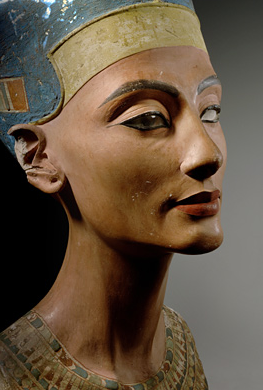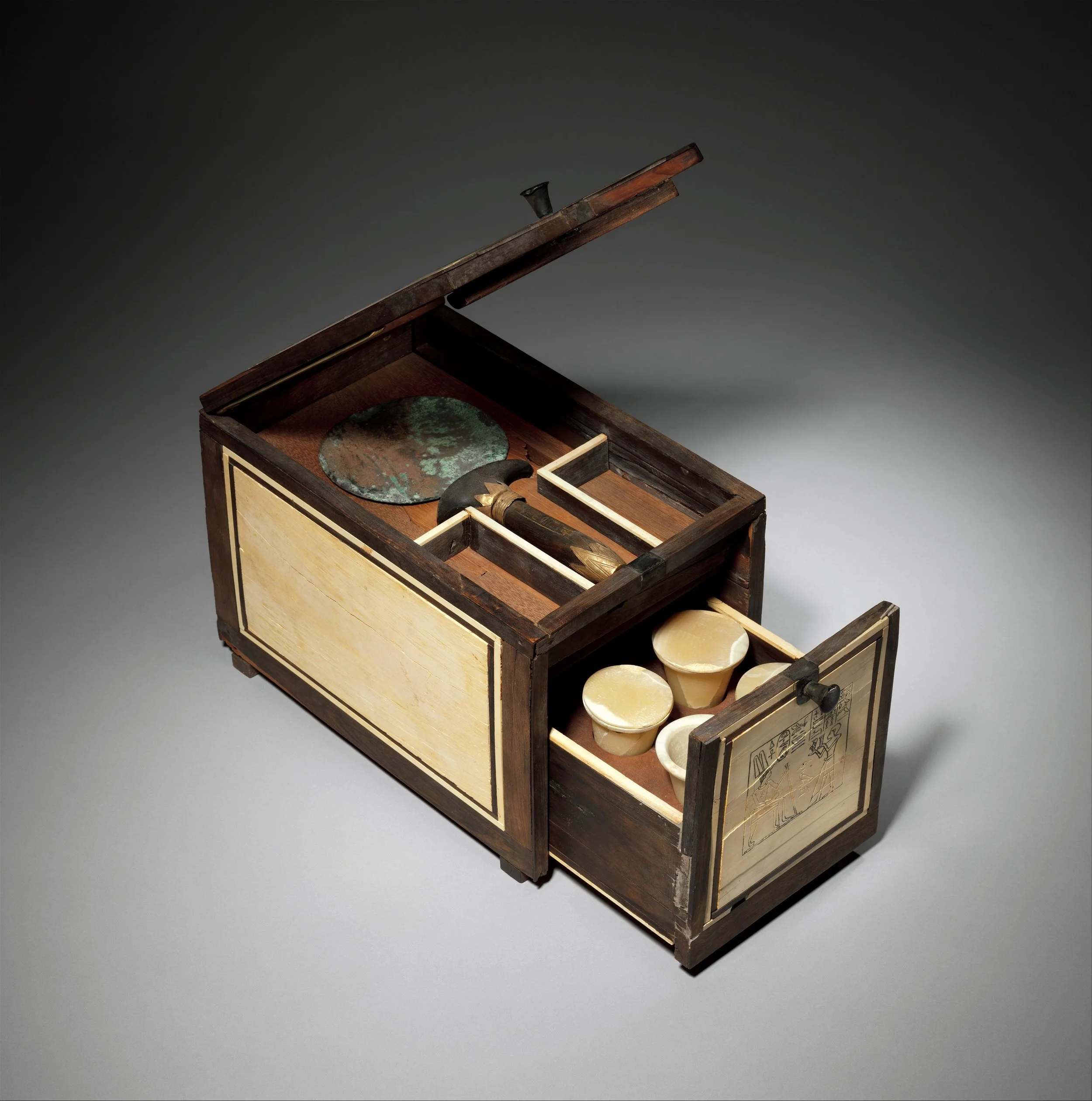Ancient Egyptian Beauty: Eyeliner, Perfume, and the Art of Looking Divine
Welcome back, fellow time travelers! Today, we're stepping into the gorgeous, glamorous, and slightly fragrant world of ancient Egyptian beauty—because if there was one civilization that understood self-care, style, and skincare, it was the Egyptians.
Forget 10-step skincare routines and viral beauty hacks—the ancient Egyptians were already perfecting their beauty game over 4,000 years ago. Their approach wasn’t just about looking good for the afterlife (though that was a bonus!)—it was a blend of self-expression, spirituality, and even practical health benefits.
So, whether you're here for the origins of eyeliner, the first recorded use of perfume, or the secret to keeping your hair fabulous in the desert heat, get ready—we're diving into the beauty rituals of the ancient world!
Beauty in Ancient Egypt: More Than Just Vanity
To the ancient Egyptians, beauty wasn’t just about a flawless smoky eye and a perfectly scented body (though they did achieve both). It was a reflection of harmony, spiritual protection, and cultural identity. Looking good was feeling good, and in their world, looking divinely good could even keep you in the gods’ favor.
The Ultimate Glow-Up: Egyptian Makeup & Skincare
Kohl: The Eyeliner That Could Do It All
Kohl eyeliner wasn’t just a bold fashion statement—it was multi-purpose magic. Egyptians lined their eyes with kohl made from lead-based galena and malachite, not just to look striking but also to:
Reduce glare from the sun (Think of it as the original sunglasses)
Prevent eye infections (The minerals had antibacterial properties!)
Channel divine protection (They believed it helped invoke the gods’ favor)
And let’s be real—they mastered the cat-eye long before we did. Cleopatra’s signature wing? That’s generations of eyeliner expertise at work.
Pigments, Powders, and the Pursuit of Perfection
Red Ochre for Lips & Cheeks: The Egyptians loved a natural flush, so they used red ochre to tint their lips and cheeks.
Malachite Green Eyeshadow: A stunning shade made from ground malachite that also had magical properties—because looking fabulous and spiritually aligned was a win-win.
Honey & Oils for Moisturizing: They slathered on honey, aloe vera, and essential oils to stay moisturized in the desert heat.
And because beauty was meant to last into the afterlife, they even placed makeup palettes in tombs. If you think modern beauty lovers take their routines seriously, imagine someone packing cosmetics for eternity.
Hair Goals: Egyptian Hairstyles & Haircare
Hair wasn’t just hair in ancient Egypt—it was a statement of status, spirituality, and self-care.
Wig Culture Was Thriving
Why? Because real hair was hot and impractical. Wigs made from human hair, palm fibers, or wool were way easier to maintain.
Who wore them? Pretty much everyone, from pharaohs to everyday folks (though wealthier people had fancier ones).
Wig Accessories? Think gold hairpins, beads, and perfumed cones that melted into your scalp to keep hair smelling fresh.
Combs & Oils
Egyptians took haircare seriously—wooden and ivory combs, scented hair oils, and elaborate braids were common. They knew that healthy hair started with good maintenance, and honestly, they were way ahead of their time.
The First Perfumers: Smelling Divine
Ancient Egyptians weren’t just about looking great—they were about smelling amazing, too. Perfume was everywhere, from temples to tombs, and scent was considered a gift from the gods.
Perfume Facts You’ll Love:
They used myrrh, frankincense, and cinnamon—all still found in perfumes today!
They created scented oils for moisturizing and rituals (so basically, the first body mists).
Perfume jars were literal works of art, made of alabaster, faience, and glass.
Even the gods had signature scents! Some temples were perfumed daily to keep divine energy fresh.
Bonus: Cleopatra was said to have had entire rooms filled with perfume! If you think your fragrance collection is impressive, she was basically running an ancient Sephora.
Cosmetics With a Spiritual Twist
In Egypt, beauty wasn’t just about aesthetic appeal—it was tied to magic, protection, and the divine.
Cosmetic containers were often shaped like animals, gods, and sacred symbols—so even their makeup bags were spiritual statements.
Amulets for beauty and protection: Many Egyptians believed in charm-infused jewelry to enhance their looks and keep away bad energy.
Funeral Beauty Rituals: Even the dead got a beauty touch-up before burial—because looking fabulous in the afterlife was just as important as in this one.
Why It Still Matters Today
Ancient Egyptians understood something we still know deep down—when you look good, you feel good. But for them, it wasn’t just about vanity—it was about honoring themselves, their culture, and the universe around them.
They invented makeup trends that still exist today (hello, winged eyeliner and bold lips!).
They linked beauty with spirituality and health, reminding us that self-care is a ritual, not just a routine.
They knew how to make an entrance—and an afterlife exit—with style.
So, the next time you apply your favorite fragrance or perfect that eyeliner flick, give a little nod to the ancient Egyptians—the original beauty influencers.
Wrapping It Up
The ancient Egyptians perfected beauty, fragrance, and haircare in ways that still inspire us today. Their self-care rituals weren’t just about looking good—they were about feeling connected to the divine, protecting their health, and celebrating life.
And if you’d like to see these beauty artifacts in person, why not experience Egypt firsthand? With Kemet Spiritual Journeys, you can visit the museums, temples, and tombs where these beauty rituals were practiced.
Start planning your Egyptian adventure at kemetspiritualjourneys.com and walk in the footsteps of history’s most glamorous civilization!





